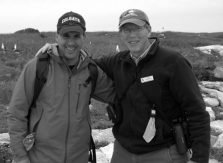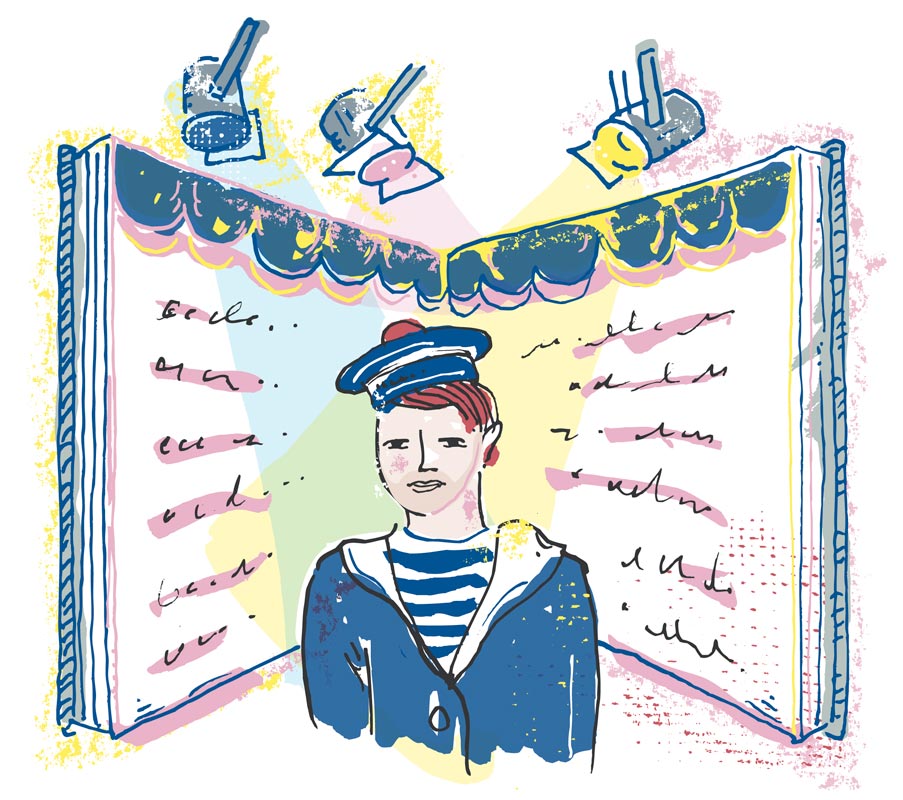Whether you’re planning an epic adventure or simply an afternoon daydreaming on your porch, check out these summer reading recommendations from professors and staff members.

Living on the Wind: Across the Hemisphere with Migratory Birds
By Scott Weidensaul
At any given moment, birds are traversing our planet in a far-flung tapestry as they migrate between countries and hemispheres. The arctic tern, for example, migrates more than 40,000 miles annually between the north and south poles. The tiny blackpoll warbler, weighing only as much as two quarters, flies more than 11,000 miles annually, including a nonstop 4,000- to 5,000-mile journey over the Atlantic Ocean. Remarkably, many of these birds return to the same locations each year, often flying at night using the stars for navigation. These and other incredible feats are brilliantly captured in Scott Weidensaul’s Living On The Wind — a Pulitzer Prize finalist. Anyone who takes the time to read this book will be amazed and astounded by what billions of migrating birds accomplish each year.
In the face of climate change and widespread degradation of natural ecosystems, most bird species are in decline. This book will not only engage you in one of the most compelling dramas in the natural world, but also provide insight into how we can take action to reduce our impacts and protect bird populations. From creating bird-friendly yards to purchasing shade-grown coffee, we can all do a little something to ensure that our avian friends can be enjoyed by people for all time.
Director of Sustainability John Pumilio first met author Scott Weidensaul in 1993 on Hog Island, Maine, a sanctuary managed by the National Audubon Society. Pumilio said that he’s always been interested in birds, but his enthusiasm really took flight in a college general ecology course. His professor sent him to historic Hog Island, where today, Pumilio directs two birding programs during the summer, followed by programs led by Weidensaul.
The Stargazer’s Sister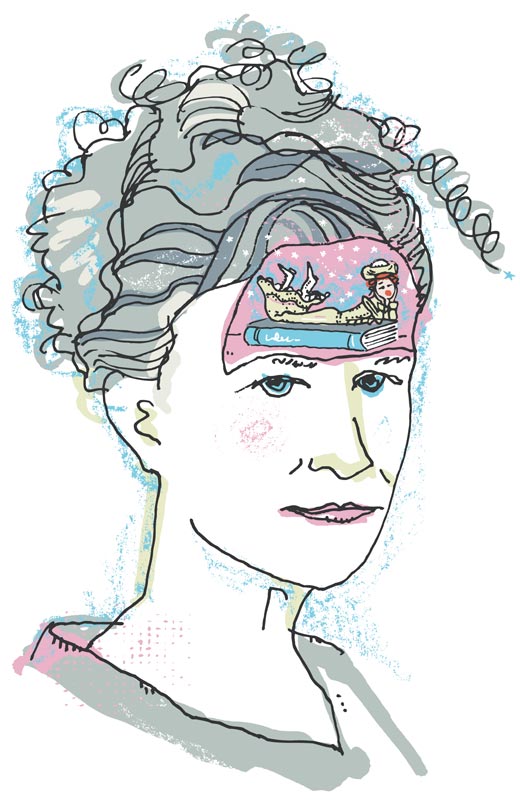
By Carrie Brown
This book began as a disembodied voice speaking to me in the dark. It was June 2000, and Carrie Brown and I were walking after sunset. We’d met when we were both teaching on the faculty of a small women’s college in Sweet Briar, Va., but we became friends during those late-night walks around campus, after we’d put the kids to bed, then met halfway between our houses.
In my memory, the air is heavy with heat but also sweet, scented with milkweed. I must have asked Carrie where the ideas for her stories came from. She is telling me about a voice that has been speaking for a while now, low but urgent, inside her head. The voice belongs to a real woman named Caroline Herschel, an astronomer born in Germany in 1750, and Carrie believes that Caroline seems to want her to tell her story (forgive me: I know this sounds squishy, but it is the way writers sometimes talk).
Scarred and stunted in childhood by smallpox, Caroline moved to Bath, England, to run the household of her older brother, the not-yet-famous astronomer and polymath William Herschel. Caroline, too, became a distinguished astronomer, discovering eight comets and winning election to the Royal Astronomical Society. In the middle of her life, she experienced a terrible rupture: pain, betrayal, loss. In her journals and memoirs, the moment is marked by a sudden silence, a lacuna that lasts for years. I won’t say what it was for fear of ruining the novel for someone. But Carrie — already an accomplished writer — couldn’t wrap her mind around that moment. Was Caroline — known as Lina — forewarned, or did it come out of the blue? What did she say? What did she do? How did she feel?
As the years came and went, Carrie published three more novels. I moved to Hamilton, to take a job at Colgate. The two of us kept walking and talking — by cellphone now. Every few months, the subject of Lina burbled up in our conversation. Then Carrie went back to work on the novel, finding a retired astronomer to help her with the science, re-reading Lina’s letters and memoirs, and musing aloud to me about Lina’s long silence. What was the silence trying to tell her? I think the breakthrough came when Carrie realized that the terrible rupture must fall not at the end of Caroline’s story but somewhere near the middle.
One morning a couple of years ago, when we were talking on the phone, Carrie said, suddenly, that she couldn’t wait to get back to her desk that day. “Why?” I was in the midst of a dry spell, so my desk held no charm for me. “I can’t wait to find out how my novel ends,” she said.
How her novel ends is my favorite part. “I could not have imagined,” Lina writes in a letter to a friend, “the strange blank of life after having lived so long within the radiance of genius.” More than a century and a half after Lina’s death, Carrie Brown fills in that strange blank with a gift so generous and profound, so surprising yet inevitable, it seems to have sprung from the stuff of Lina’s own dreams.
Setting aside my long friendship with the author, The Stargazer’s Sister is the kind of book I love best. The storytelling is deft and riveting: it catches and holds me till the end. It is full of facts about astronomy that I never could have learned from a textbook. It reminds me of an old lesson I am wont to forget, which is that sometimes silence — the appearance of nothing — is the biggest something. Finally, it lets me walk for a while alongside one particular woman who might otherwise have been nothing more than a minor footnote in the history of science.

Jennifer Brice was too humble to mention that she makes an appearance in The Stargazer’s Sister — on the dedication page, where Brown thanks her for helping bring the story to life. Brice is the author of two nonfiction books, The Last Settlers and Unlearning to Fly, as well as numerous essays. An associate professor of English at Colgate, she teaches creative writing workshops as well as the popular Living Writers course offered both on campus (for students) and online (for alumni and parents).
The Confusion (book two of The Baroque Cycle)
By Neal Stephenson
Reading is an essential aspect of my life. It both soothes and stimulates, allows me to step away from the everyday world, and lets me explore multitudinous universes of imagination. The Baroque Cycle series is a lively combination of historical fiction and swashbuckling adventure. It’s also a complex and insightful exploration of the beginnings of the Enlightenment, modern science, and the politics of Europe and the Americas.
The characters are drawn with wit and style and with a sharp eye for the perverse. Meet Half-Cocked Jack Shaftoe, called “King of the Vagabonds,” and Eliza, a grown child-slave with a vicious head for money, natural philosophy, and politics. Also, Sir Isaac Newton, Dr. Wilhelm von Leibniz, and King Louis XIV all have parts to play in this vast, dramatic re-creation of Europe during the Baroque era. The book explores the invention of calculus, theories of gravity, piracy, slavery, alchemy, political machinations, magical gold, and vivisection. There are pirate queens, crocodile battles, and plenty of explosions. Neal Stephenson is an epic storyteller — I would recommend his books to anyone craving a good yarn that will make you think.
Before joining Colgate as the Picker Art Gallery’s administrative assistant, Jasmine Kellogg spent six years as co-owner and manager of a café/art gallery on New Zealand’s South Island. Also at Colgate, Kellogg teaches Gyrokinesis (a holistic approach to movement).
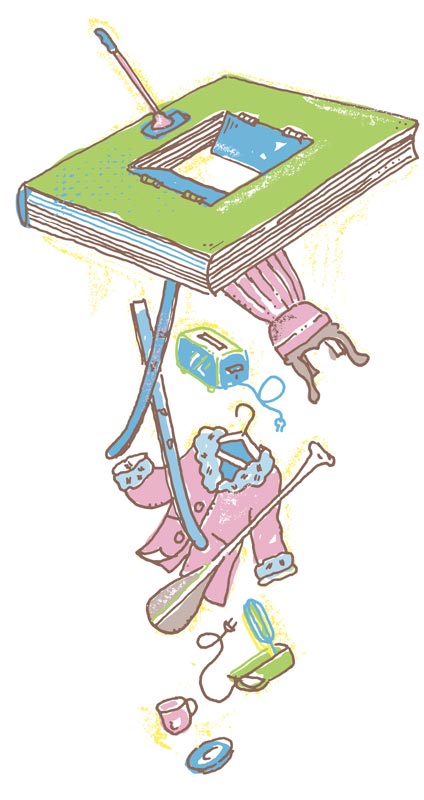 The More of Less: Finding the Life You Want Under Everything You Own
The More of Less: Finding the Life You Want Under Everything You Own
By Joshua Becker
What do I do with all my extra stuff? Ever since my first utterly failed attempts to follow advice from Marie Kondo (author of The Life-Changing Magic of Tidying Up) for living a clutter-free life, I have been intrigued by the idea that some kind of liberation might be found by owning fewer possessions. Of course, the idea of detachment from material things is a fundamental moral concern for many of the world’s religions, but so often it is framed as self-denial or penance. A new wave of writers, bloggers, and podcasters is challenging the notion that living simply is a punishment. In fact, they’ll argue, leading a life with few possessions has the power to liberate a person for better relationships, better health, a clearer sense of purpose, and a greater opportunity to live generously with his or her community.
As I’ve strategized about making some big changes in my own life, I have grown fond of some of these writers — most recently, Joshua Becker of becomingminimalist.com. Becker is a Christian pastor whose family of four has embarked on a path toward living as simply and purposefully as possible. His most recent book, The More of Less, is both a manifesto and a how-to manual for simplifying one’s life and finding greater freedom and purpose. Becker believes that we find our deepest joy and fulfillment in serving others, and that our possessions frequently get in the way of that joy.
As a person with some stuffed storage closets, I’ve accepted Becker’s book as both a promise and a challenge. What if I really got rid of all the clutter?

Mark Shiner, university chaplain and campus Catholic minister, said he’s been “thinking a lot about the role of silence, simplicity, and solidarity in a well-lived life” — as reflected in his current reading habits.
Lovers at the Chameleon Club, Paris 1932
By Francine Prose
My mother is a voracious fiction reader, so once or twice a year, she sends me a mystery box of books, filled with those that she particularly enjoyed and those that she found challenging. Francine Prose’s novel Lovers at the Chameleon Club, Paris 1932 fell into both categories at once.
Inspired by Brassai’s black-and-white photograph Lesbian Couple at Le Monocle, 1932, Lovers at the Chameleon Club centers around Lou Villars, a lesbian racecar driver in 1920s Paris. After Lou’s license is revoked by the government for dressing as a man in public, she goes on to perform as a French sailor in a revue at the semi-underground Chameleon Club. Then, through an old acquaintance from the racing scene, she is invited to the 1936 Berlin Olympics, where she begins working for the Nazi party as a spy and collaborator.
As someone who studies popular entertainment in the 1920s with an eye toward the performance of gender, I was captivated by the story’s vivid portrayal of the ways in which Lou and her fellow performers negotiate gender on stage at the Chameleon Club. Additionally, I was interested in how Lou’s friend Gabor — a Hungarian photographer modeled on Brassai — represents and, more often, constructs identity in his images. Lovers at the Chameleon Club also offers a sweeping vision of the political atmosphere of the era, recounted by a crowded cast of narrators: Gabor, his friend Lionel Maine (modeled on Henry Miller), the aging singer who owns the Chameleon Club, a savvy patroness of the arts married to a gay man who owns a luxury car company, and a woman who is (retrospectively) writing a biography of Lou Villars. The one voice that Prose doesn’t offer us is Lou’s own, and as a result we’re left to piece together who our protagonist actually was, who she becomes, and how a character can be deeply compelling even as she commits atrocities.

Mary Simonson is assistant professor of women’s studies and directs the Film and Media Studies Program. Her research focuses on 19th- and early 20th-century opera and dance, film music, and dance on screen. She is currently writing a book on film exhibition in the United States in the 1920s.
 Perfectly Imperfect: A Life in Progress
Perfectly Imperfect: A Life in Progress
By Lee McConaughy Woodruff ’82
From the outside, it seems like Lee Woodruff — who is a writer and frequent contributor to national TV shows and magazines — is “perfect” and lives the “perfect” life, but she is like everyone else in the world. In this New York Times bestseller, Lee encourages us to, in fact, embrace our imperfections because that is what makes us unique and often brings out love, happiness, and fun.
I had been wanting to read this book for a while, so I bought it at the Colgate Bookstore (I love bookstores!). Lee makes her life stories so relatable, and there is so much wisdom in every chapter that I can relate to in my daily life. I also love Lee’s writing style. Her storytelling is awesome: in one story, I will laugh one second and cry the next.
After reading this book, I came away inspired, and I recommend it because I think everyone should experience that. It’s about enjoying life to its fullest, whether you’re going through something tragic or running errands. For example, on coping with tragedy, Lee writes: “Swimming surrounds me in the velvet wet of a bluish green world where I can dive deep down and sob with no trace.”
I have had the opportunity to come to know Lee, and she has a way of making you feel so special and loved. This book does the same thing.

Athletics Director Vicky Chun ’91, MA’94 often reads on the road while traveling with teams or to meetings. A lesser-known fact about Chun is that she knows how to fly a plane: “It’s the only time I travel and don’t read a book!”
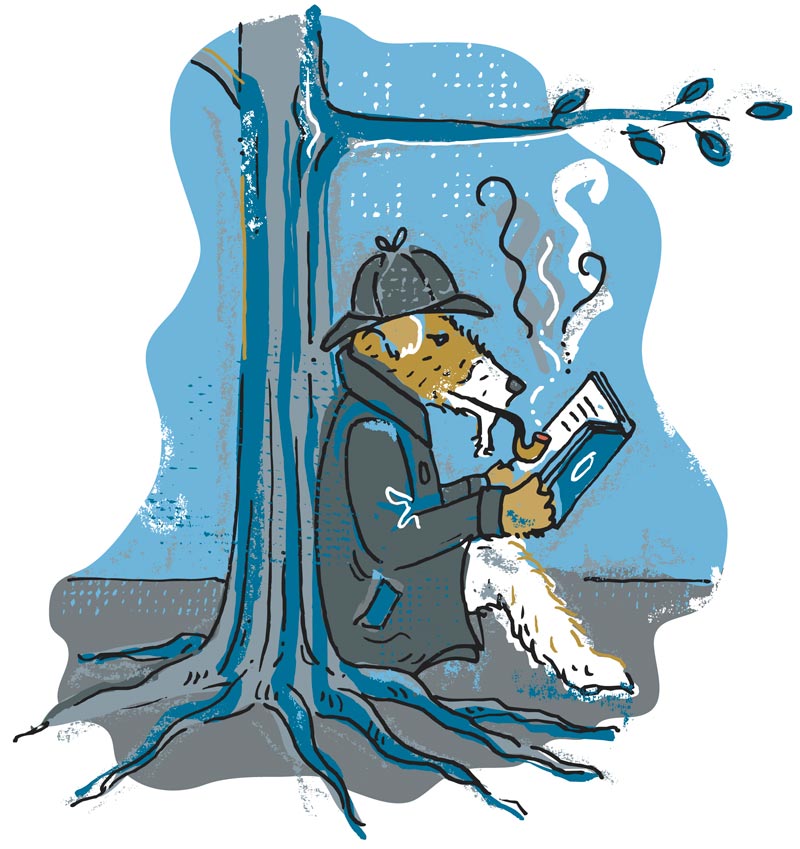 The Tale of Briar Bank (The Cottage Tales of Beatrix Potter, #5)
The Tale of Briar Bank (The Cottage Tales of Beatrix Potter, #5)
By Susan Wittig Albert
I love mystery books and am eager to learn of interesting authors. A series based on Beatrix Potter appealed to me because The Tale of Peter Rabbit, The Tale of Mrs. Tiggy-Winkle, and other works by her were a familiar part of my childhood. Nostalgia plus mystery equals an enjoyable read.
The series narrative incorporates real details from Potter’s life after her purchase of Hill Top Farm in the English Lake District. In the series, this action, and her independence in general, is met with considerable disapproval by her parents, who live in London. A biography of Potter can provide a more thorough understanding of her experiences, but the series’ storylines incorporate aspects of how she pursued her career and independent land ownership. She finds happiness despite these obstacles and helps others solve their problems in creative and dignified ways. Those aspects of the stories resonate with me.
A hallmark of the series is that it incorporates the viewpoints of the animals, who often observe more than the Big Folk. In The Tale of Briar Bank, their stories are key because Bailey Badger, Pickles the fox terrier, and another creature (no spoilers!) are the only witnesses to the accidental death of Mr. Hugh Wickstead, the owner of Briar Bank Cottage. The omniscient narrator guides the reader from one story to another, hearing about Bailey Badger’s narrow escape from a frozen lake and Pickles’s valiant effort to help his companion Mr. Wickstead. Although Potter is not privy to these stories, she often intuits what the animals around her are trying to communicate. Using logic and keen powers of observation, she always solves the mystery by the end of the book.
These books are great, year-round reads, suitable for chilly evenings indoors or warm days on the porch, because the narrative captivates the imagination. The incorporation of factual events from Potter’s life may appeal to literary and historical-minded readers, and fans (of many ages) of Potter’s works will enjoy the series as well.

Sarah Keen has been the head of Special Collections and university archivist at Colgate since 2010. She is the caretaker of her grandfather’s nearly complete collection of Agatha Christie’s mystery paperback editions.


